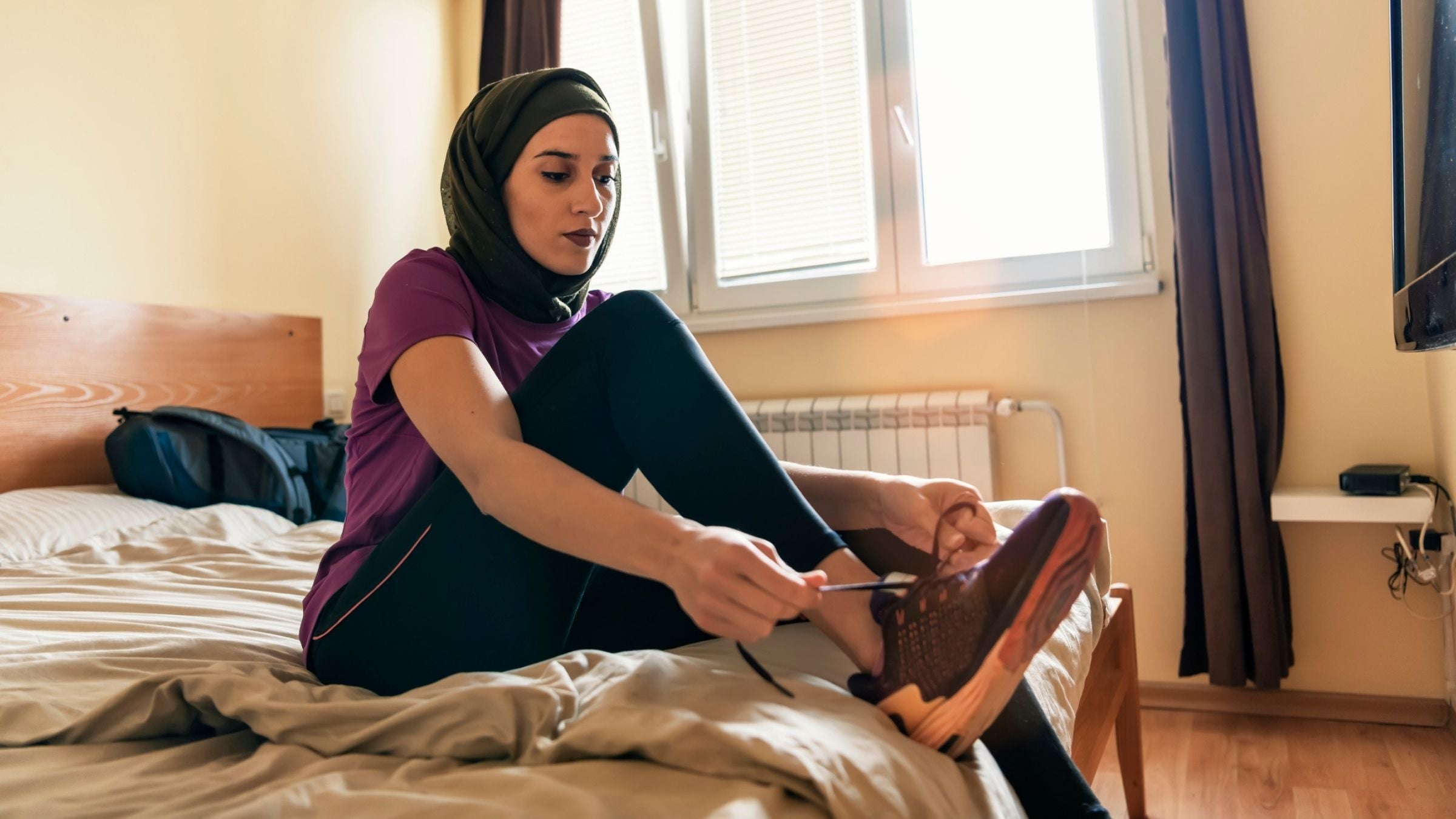Ask A Trainer: Should I Be Wearing Cushioned Running Shoes?

(Photo: Getty Images)
Maximalist cushioned running shoes are all the rage these days, and few things evoke more commentary, fervor, and zeal than a conversation around running shoes. We tend to care a lot more about that thin – or in this case, ultra-thick – layer of rubber between us and the ground than we do about a lot of things.
Highly-cushioned shoes have become popular among athletes who prefer a cushioned shoe. But first, we have to examine our intense relationship with shoes in the first place. Before we dive into the controversial stuff, let’s remember the underlying belief that unites all runners: we believe our shoes save us. Or to put it another way, woe to the runner unjustly fit into the wrong shoe. That marathon? Gone in the blink of a Strava KOM, especially should the wrong shoes cup your heels.
So if all this certainty exists about the destroying power of the wrong shoe, how do we know when we have found the “right” pair?
Cushioned running shoes: Do they hurt or help?
Put aside your personal preferences for a moment. There are various theories and research that can help us understand if cushioned shoes are good for us or not.
Try not to pass judgment on any theory or study – take a moment to examine your own relationship with shoes. We all want our shoes to look right, be a certain color, have the precise size, and be the correct brand. Even choosing not to wear shoes is now a trend. Yes, there’s a lifestyle, product, and similar promises associated with virtually any fork in the road.
The question is: which fork have you chosen? Where do your loyalties lie, and why? Are your shoes responsible for your failure or success? Your injuries or latest fitness streak?
Study links cushioned shoes to higher impact
Despite popular belief, researchers from the Spaulding National Running Center determined that highly-cushioned shoes are not linked to lower levels of impact than traditional running shoes. They found the opposite to be true. The study showed that highly-cushioned shoes come with a higher vertical average load rate and vertical instantaneous loading rate. Both of these issues promote overuse injuries like stress fractures and plantar fasciitis. But why? Aren’t those cushioned soles supposed to protect us?
“People actually land softer when they have less cushioning,” said Irene S. Davis, Ph.D., PT, a professor in the Department of Physical Medicine and Rehabilitation at Harvard Medical School and director of the Spaulding National Running Center. “Cushioning actually lulls you into thinking you can slam your foot into the ground.”
When I ran cross-country and track in college, I learned the hard way that highly-cushioned shoes were not for me. In cushioned shoes, I experienced stress fractures every season. Once I switched to a lightweight trainer, boom – it never happened again.
Jay Dicharry, a physical therapist and author of Anatomy for Runners, said: “People are frustrated, and we’re told so often there’s a magic shoe that will stop our injuries. But that’s just not true.”
The bottom line? Everyone is different – from your running form to your mileage, there’s no one right shoe for everyone. Just like evaluating any shoe, if you wear super-cushioned shoes and have recurring injuries, you might want to reconsider if they really are good for you.
Get more expert advice in our Ask A Trainer archives.